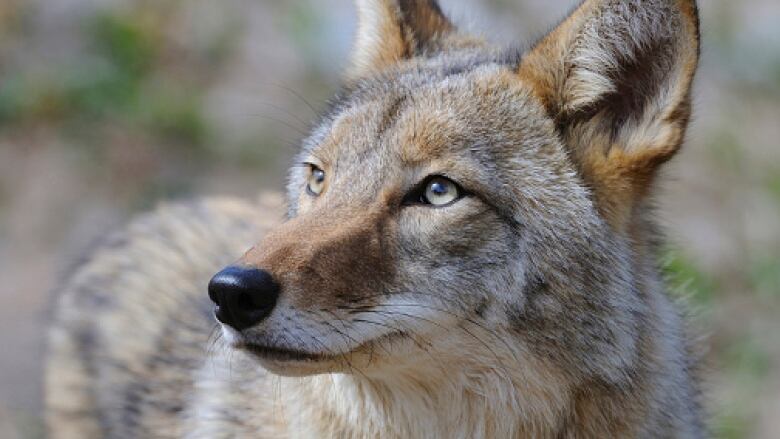Pet owner creates coyote alert network in East Vancouver
Judith Webster hopes text messaging network will warn when coyotoes are nearby

A resident in East Vancouver has created a text messaging network to prevent pets from falling prey to coyotes.
Judith Webster says she was inspired to start up the network after her neighbour said she saw a cat in a coyote's mouth near her house recently.
"She was pretty traumatized about it," she said.
Webster says it's pretty common for cats to prowl freely throughout her neighbourhood making them vulnerable to an encounter with a coyote.
She lost her own cat to a coyote attack in 2005.
"Within a three block radius, I [can] encounter a dozen cats," she explained. "It's difficult ... I'm hoping there will be an increased awareness in this."
The group which currently has around 20 members works like this: when a member of the group spots a coyote, they send a text message with as much information as possible to the group moderator. Then, that moderator sends out a group message warning of the coyote's presence in real time.
"I think the more eyes on the street the better," she said. "Maybe we'll actually learn a bit about coyotes, create awareness, [and] maybe we'll save a few cats."
Interactive map already exists
Coyote sightings are already recorded weekly by the Stanley Park Ecological Society in an interactive online map.
Greg Hart, coordinator of the urban wildife program at the Stanley Park Ecological Society, says coyotes are opportunistic hunters that don't go out of their way to target domestic pets. Studies of coyote droppings across various cities show domestic pets only make up one to two per cent of a coyote's diet, he added.
"That's not zero, and it does mean that it does happen once in a while, but they're not waiting around. However, we can keep our pets safe by keeping dogs on a leash and cats indoors as much as possible,"he said.
Hart says its great more pet owners are taking initiatives like the texting network and becoming more aware of coyotes, but he said it would be great if they could add their sightings to the existing map.
"It really does help to have one centralized database where we can keep track of individual animals and monitor their behaviour to make sure they're not becoming more habituated and then we can also coordinate with conservation officers or rescue groups as need be," he said.
Protect your cat using other means
The B.C. SPCA's chief scientific officer Sara DuBois agreed with Hart in that coyotes aren't the major issue.
She says pet owners who let their cats roam outside on their own are leaving them vulnerable to many other dangers like getting into fights with other cats or animals like raccoons.
"Our advice is really to keep your cat under control," she said. "Sometimes, people have leashes for cats. Some people have catios. Some people go out with their cat and keep an eye on them because the city is an unsafe environment for them."

Besides, she said, coyotes serve a crucial role in the city.
"We really need them in the city because rodents are 90 per cent of their diet. Can you imagine if we didn't have them around what the city would look like?" she said. "It would be rat heaven."
Vancouver has about 200 coyotes, and there are about 2,000 to 3,000 in the entire Lower Mainland, according to the society.
With files from Megan Batchelor












_(720p).jpg)


 OFFICIAL HD MUSIC VIDEO.jpg)
.jpg)



























































































